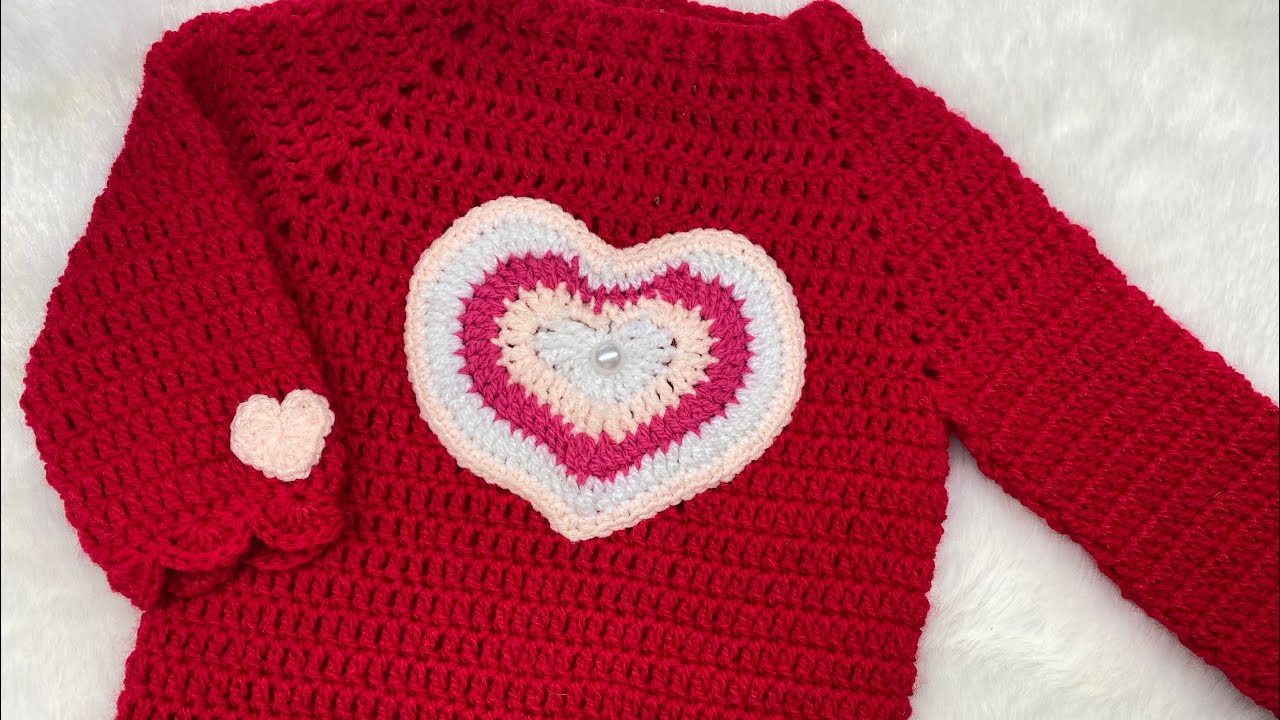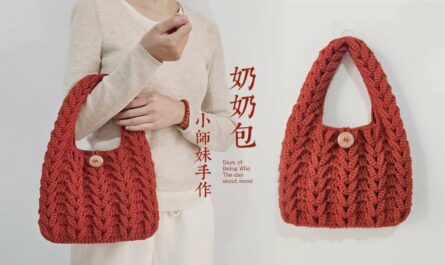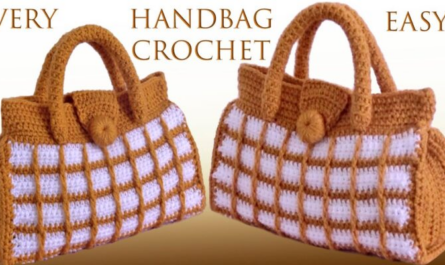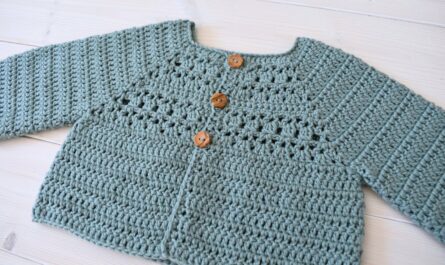Valentine’s Day is a time for expressing affection, and what could be more heartfelt than a handmade crocheted sweater? Unlike store-bought gifts, a crocheted sweater is a tangible representation of the time, care, and love poured into every single stitch. It’s a cozy embrace made wearable, a thoughtful gesture that wraps your loved one (or yourself!) in warmth and affection. Whether you opt for classic romantic hues, subtle symbolic motifs, or an overt declaration of love, a Valentine’s Day sweater is a truly special way to celebrate.
This detailed article will guide you through the process of crocheting a meaningful sweater for Valentine’s Day, exploring design ideas, essential techniques, and tips to make your project a true labor of love.
Why Crochet a Sweater for Valentine’s Day?
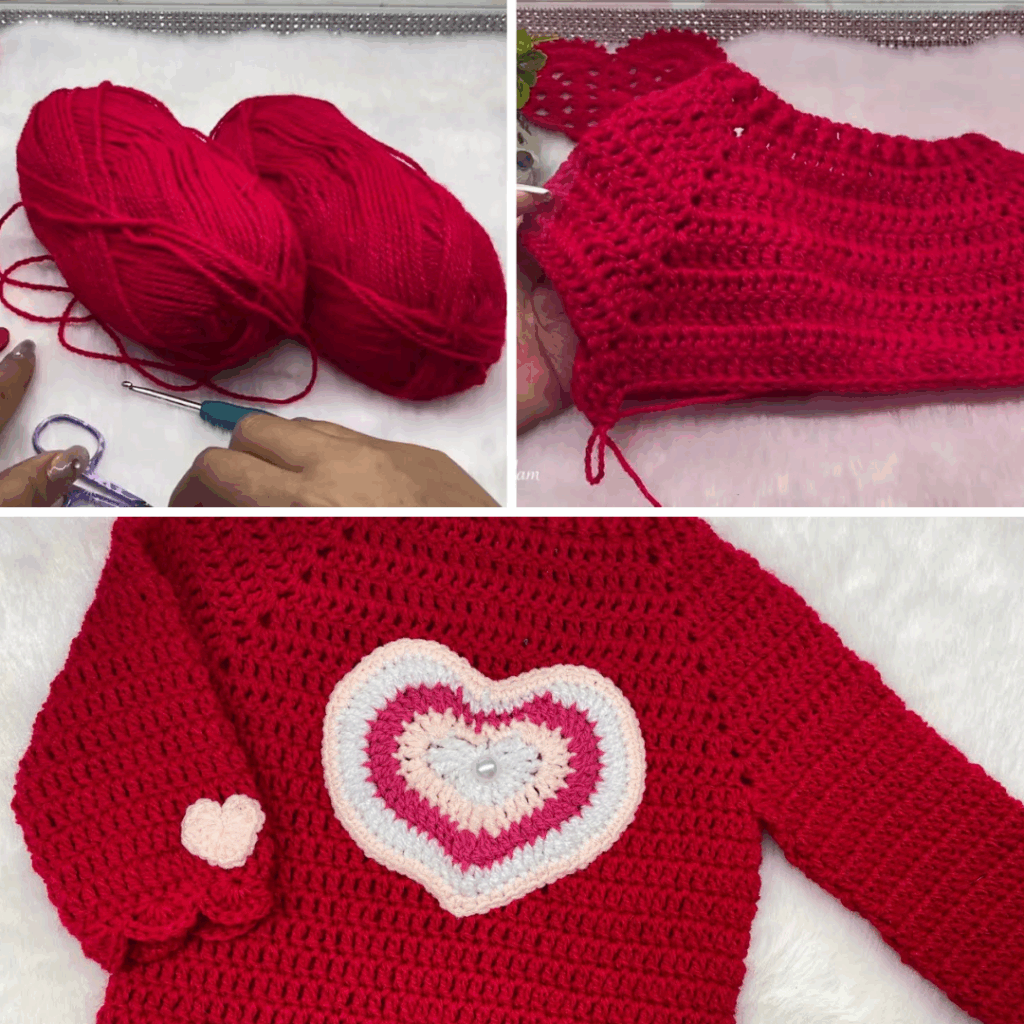
- A Gift from the Heart: Handmade gifts carry an unparalleled emotional value. A crocheted sweater shows significant effort and personal investment, making it far more meaningful than a mass-produced item.
- Warmth and Comfort: Nothing says “I care about you” quite like a cozy sweater. It provides literal warmth, symbolizing the comfort and security of your affection.
- Personalization: You can tailor every aspect of the sweater – from color to fit to design elements – to perfectly suit the recipient’s style and your relationship.
- Lasting Keepsake: Unlike chocolates or flowers, a well-made sweater is a durable item that can be cherished and worn for years, serving as a constant reminder of your thoughtfulness.
- Mindful Creation: The act of crocheting can be a meditative and calming experience, allowing you to infuse positive intentions and love into your stitches as you create.
Designing Your Valentine’s Day Sweater: Love in Every Loop
The beauty of a handmade sweater is the ability to infuse it with personal touches.
1. Color Palette: The Language of Love
- Classic Romance: Deep reds, passionate pinks, and creamy whites are timeless choices for Valentine’s Day.
- Subtle Affection: Soft blush tones, dusty rose, or even elegant grays with hints of burgundy can convey love in a more understated way.
- “Our” Colors: Incorporate colors that hold special meaning for you and your loved one – perhaps from a memorable event, a favorite sports team, or a shared experience.
- Ombre/Gradient: Blend shades of red, pink, or purple for a beautiful, seamless color transition that looks sophisticated and thoughtful.
2. Design Elements & Motifs
This is where you can truly express your Valentine’s message.
- Hearts: The quintessential symbol of love.
- Intarsia/Tapestry Crochet: Work heart shapes directly into the fabric of the sweater using colorwork.
- Appliqués: Crochet separate small or large hearts and stitch them onto the finished sweater.
- Lace/Openwork: Create subtle heart patterns using open stitches, ideal for a lighter sweater.
- “Love” Lettering: Simple block letters spelling “LOVE,” “XOXO,” or initials can be incorporated using tapestry crochet or surface crochet (stitching on top of the finished fabric).
- Textures:
- Bobbles/Puffs: Use these stitches to create raised, tactile heart shapes or simply a cozy, loving texture.
- Ribbing: A classic, comfortable texture that provides elasticity and a polished finish.
- Stripes: Simple stripes in your chosen Valentine’s colors are always a classic and easy way to add visual interest.
- Simple Elegance: Sometimes, the most loving gesture is a beautifully made, well-fitting sweater in a single, cherished color, relying on the quality of your stitches and yarn to convey warmth.
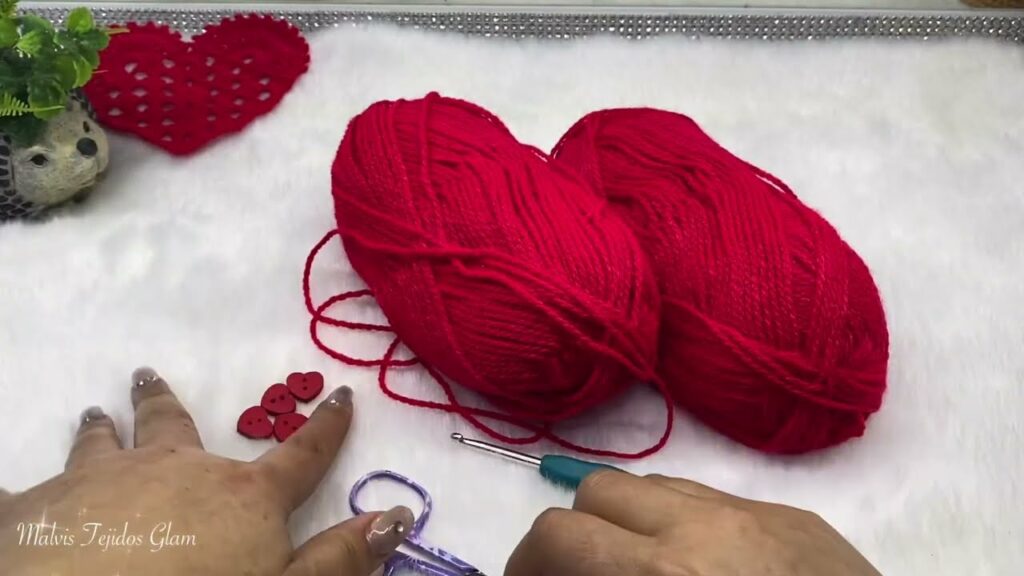
3. Sweater Style & Fit
Consider what the recipient would genuinely wear and appreciate.
- Pullover vs. Cardigan: A pullover is a classic, cozy option. A cardigan offers versatility, allowing it to be worn open or closed.
- Fit: Relaxed/Oversized for ultimate comfort, or a more fitted silhouette for a contemporary look.
- Neckline: Crew neck, V-neck, boat neck, or even a cozy turtleneck.
- Sleeve Length: Full-length, 3/4 length, or short sleeves, depending on the climate and preference.
4. Yarn Choice: Softness and Durability are Key
The yarn you select impacts the comfort, drape, and longevity of your heartfelt gift.
- Fiber:
- Superwash Merino Wool: Luxuriously soft, warm, excellent stitch definition, and machine washable. A premium choice for a truly special gift.
- High-Quality Acrylic/Acrylic Blends: Modern acrylics can be incredibly soft, durable, hypoallergenic, and machine washable, making them practical for everyday wear.
- Cotton/Cotton Blends: Breathable and comfortable, good for lighter sweaters or warmer climates.
- Alpaca/Alpaca Blends: Incredibly soft and warm with a beautiful drape, though can be delicate and more expensive.
- Weight: DK (Double Knitting, Category 3), Worsted (Category 4), or Chunky (Category 5) are popular choices, offering a good balance of warmth, working speed, and stitch definition.
- Colorfastness: Ensure your chosen colors won’t bleed when washed, especially if using contrasting reds/whites.
Materials You’ll Need
- Yarn: Your chosen colors, fiber, and weight. Check your pattern for recommended yardage based on your size.
- Crochet Hook: The size(s) recommended by your pattern to achieve the correct gauge.
- Stitch Markers: Invaluable for marking beginnings of rounds, increase points, and shaping.
- Tapestry Needle (Yarn Needle): Essential for weaving in ends and seaming.
- Scissors.
- Measuring Tape: Crucial for taking measurements and checking your gauge.
- Buttons/Closures (Optional): If your design includes them (e.g., for a cardigan).
Essential Crochet Techniques You’ll Master
Crocheting a sweater is a rewarding challenge that will refine several key skills:
- Foundation Chain & Slip Knot: The starting point.
- Basic Stitches: Chain (ch), Slip Stitch (sl st), Single Crochet (sc), Half Double Crochet (hdc), Double Crochet (dc) – the building blocks of most sweaters.
- Working in Rows & Rounds: Depending on your chosen construction method (flat panels vs. seamless).
- Increasing & Decreasing: Essential for shaping the body, armholes, neckline, and sleeves.
- Working Ribbing: Learning techniques like back loop only (BLO) or front post/back post (FP/BP) stitches for elastic and professional-looking necklines, cuffs, and hems.
- Colorwork (Optional): If incorporating designs like hearts (e.g., tapestry crochet or intarsia).
- Seaming (if applicable): How to neatly join crocheted panels together.
- Weaving in Ends: Meticulously hiding all yarn tails for a polished and durable finish.
- Blocking: Absolutely crucial for any garment. It evens out stitches, enhances drape, opens up lace patterns, and sets the final shape and size of the sweater.
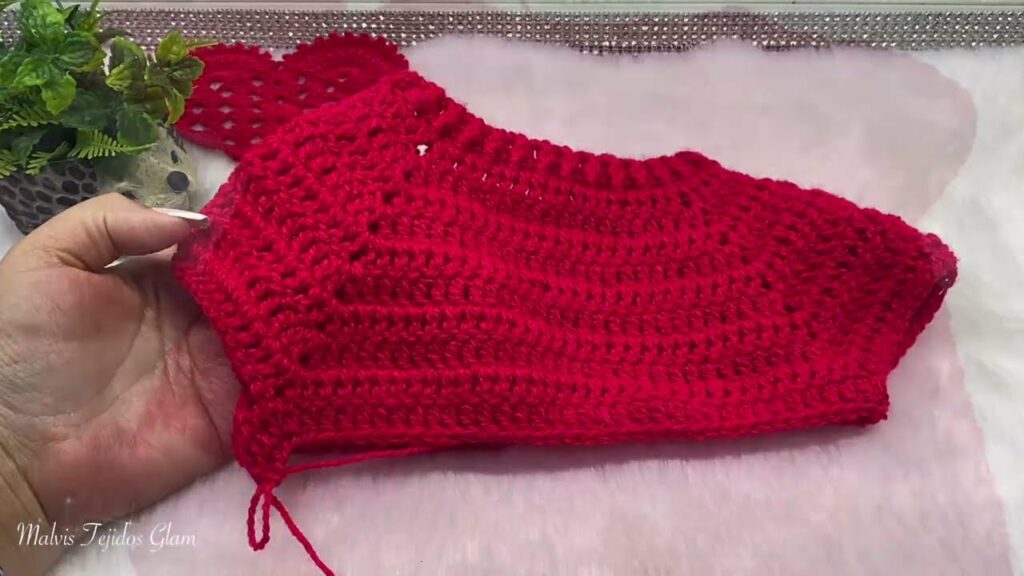
Planning Your Valentine’s Day Sweater: A Labor of Love Begins
- Sizing & Measurements:
- Discreetly get the recipient’s bust/chest circumference, shoulder width, preferred sleeve length, and overall sweater length. If it’s a surprise, “borrow” a well-fitting sweater they own and measure it.
- Choose a pattern size that corresponds to their measurements, adding “positive ease” (extra room) for comfort (often 2-6 inches depending on desired fit).
- Gauge Swatch (Non-Negotiable!):
- This is the most critical step for any garment. Crochet a substantial swatch (at least 4×4 inches / 10×10 cm) in your chosen yarn and hook, using the primary stitch pattern of the sweater.
- Wash and block your swatch exactly as you plan to wash and block the finished sweater. This is vital, as yarn can behave differently after laundering.
- Measure your stitches and rows per inch/cm accurately. Adjust your hook size if your gauge doesn’t match the pattern’s recommendation. This ensures the sweater fits!
- Yarn Quantity: Consult your chosen pattern’s yardage requirements for your specific size. Always purchase an extra skein just in case – running out mid-project is a nightmare!
- Pattern Selection: Choose a well-written sweater pattern that fits your desired style and skill level. Look for clear instructions, sizing options, stitch diagrams, and positive reviews. Consider patterns specifically designed for Valentine’s Day or those easily adaptable with colorwork.
- Time Management: Start early! A sweater is a significant project. Give yourself ample time before Valentine’s Day to complete it without stress.
Construction Journey: Stitching Each Moment of Affection
The steps will vary based on your chosen pattern (e.g., top-down, bottom-up, or seamed panels). Here’s a general overview:
- Crochet the Main Body:
- This might involve crocheting front and back panels separately and seaming them, or working seamlessly in the round from the bottom up or top down.
- Incorporate your chosen colorwork or texture as you go.
- Shape for armholes and neckline as directed by the pattern.
- Crochet the Sleeves:
- Sleeves can be worked flat and seamed, or worked in the round from the armhole opening down.
- Shape with decreases to taper towards the wrist.
- Add Ribbing/Edgings:
- Work ribbing for the bottom hem, sleeve cuffs, and neckline. This adds elasticity and a polished finish.
- For a cardigan, add a button band or front placket.
- Assemble the Sweater:
- If working in pieces, carefully seam the shoulder seams, side seams, and sleeve seams using a tapestry needle and a neat joining method.
- Add Embellishments (Optional):
- Sew on any appliqués (like crocheted hearts).
- Add buttons, if applicable.
Finishing Touches: The Grand Reveal
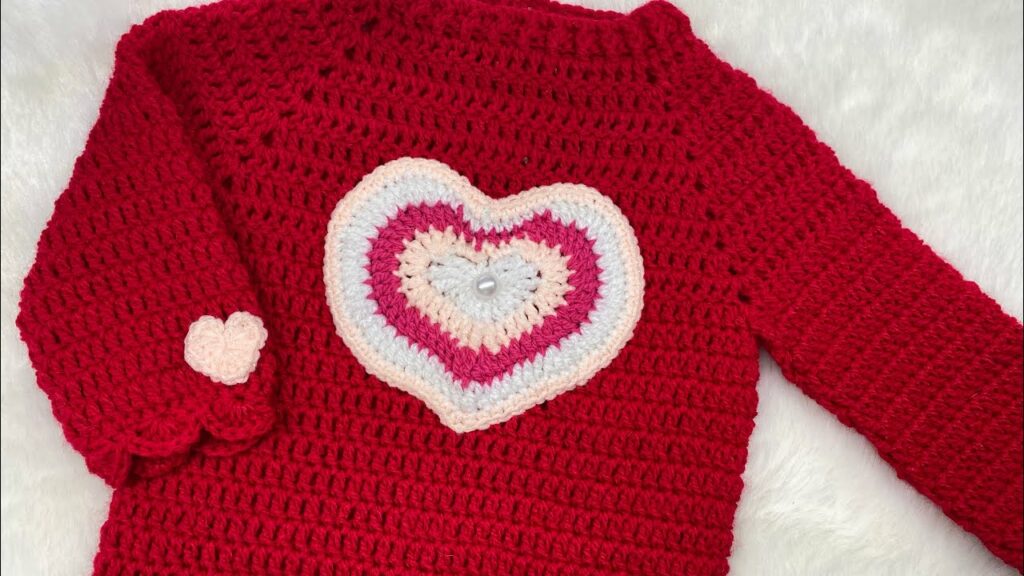
- Weave in All Ends: This is a crucial step for a professional-looking and durable sweater. Take your time to meticulously hide every yarn tail securely within the stitches.
- Blocking (The Ultimate Transformation):
- This step is absolutely vital for any crocheted garment. Gently wet the finished sweater (or steam it), carefully shape it to its intended dimensions on blocking mats, and pin it securely.
- Allow it to dry completely. Blocking evens out stitches, enhances drape, opens up lace patterns, and sets the final shape and size of your sweater, truly transforming it from a collection of stitches into a polished garment.
- Presentation: Fold it neatly, perhaps tie it with a beautiful ribbon, or place it in a special box. Add a handwritten card expressing your love and the care that went into making it.
Crocheting a sweater for Valentine’s Day is more than just a craft project; it’s a profound expression of affection and dedication. Every loop and knot tells a story of love, making it a gift that will be cherished far beyond the holiday itself. Happy crocheting, and happy Valentine’s Day!
Video Tutorial ;
